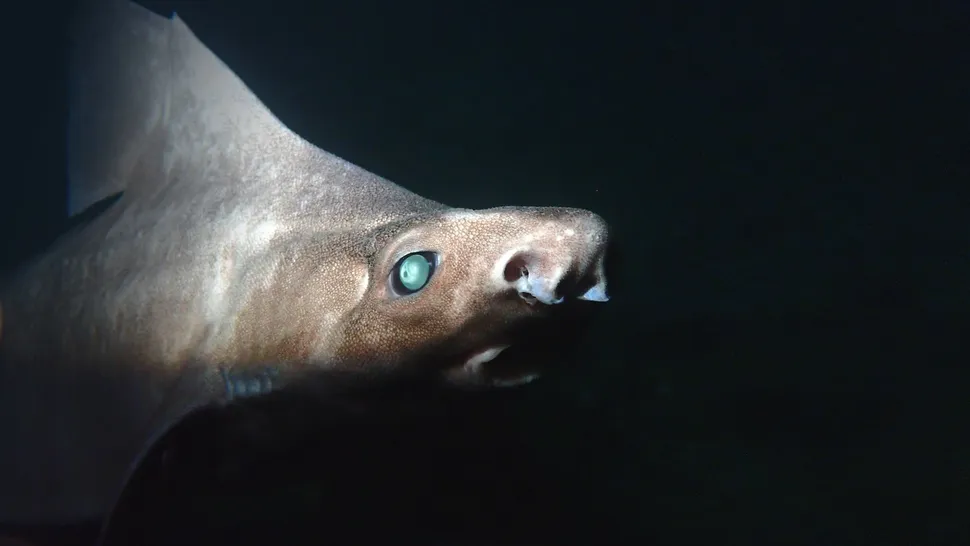A remarkable marine discovery has occurred off the coast of Albania, capturing global attention.
A rare ghostly white deep-sea shark, known as the angular roughshark (Oxynotus centrina), was caught by a commercial trawler near the secluded military outpost of Sazan Island.

This elusive deep-sea creature resides at depths around 656 feet (200 meters), and its unusual white appearance is due to a rare genetic condition called leucism.
This discovery marks the first instance of leucism documented in this specific shark species and its family, Oxynotidae.
Leucism is a genetic disorder that leads to reduced pigmentation, setting it apart from albinism, which results in a complete absence of melanin and often red irises.
According to lead researcher Andrej Gajić from Sharklab ADRIA, while leucism affects body pigmentation, the shark maintains normal eye color thanks to regular retinal pigmentation.
This makes the condition distinctly different from albinism.
Typically, angular roughsharks are dark gray or brown, featuring dark blotches that help them blend with their environments.
However, this leucistic individual exhibited pale, whitish patches, primarily around its tail.

Fortunately, its health appeared unimpacted by this genetic anomaly, which is an extraordinary find considering that such pigment disorders in deep-sea sharks are exceptionally rare, with only fifteen documented cases across various species.
Leucism is primarily caused by genetic disruptions in melanin production or distribution, but environmental factors such as exposure to pollutants, elevated temperatures during embryonic development, hormonal changes, or even inbreeding might also play roles.
Despite these pigmentation changes making the species potentially more visible to predators and prey, there is no significant evidence suggesting a detrimental impact on the survival or reproductive capabilities of affected sharks.
The area near Vlorë, where this remarkable shark was found, is increasingly recognized as a crucial habitat for endangered marine species.
Alongside the angular roughshark, other critically endangered species like little gulper sharks (Centrophorus uyato) and spiny butterfly rays (Gymnura altavela) reside in these waters.
Interestingly, some species such as the spiny butterfly ray have only recently been recorded in the Adriatic Sea, emphasizing the region’s ecological importance.
This extraordinary sighting not only highlights the fascinating diversity of marine life but also underscores the pressures exerted by human activities such as pollution and fishing.

Researchers suggest that these activities might increase sharks’ susceptibility to genetic disorders and diseases.
This discovery raises critical questions about the need for conservation and monitoring efforts in ecologically sensitive marine areas like those off Albania’s coast.
The study detailing this unprecedented discovery has been published in the Journal of Fish Biology, providing the scientific community and the world with valuable insight into the rare occurrences of pigment disorders among deep-sea species.
